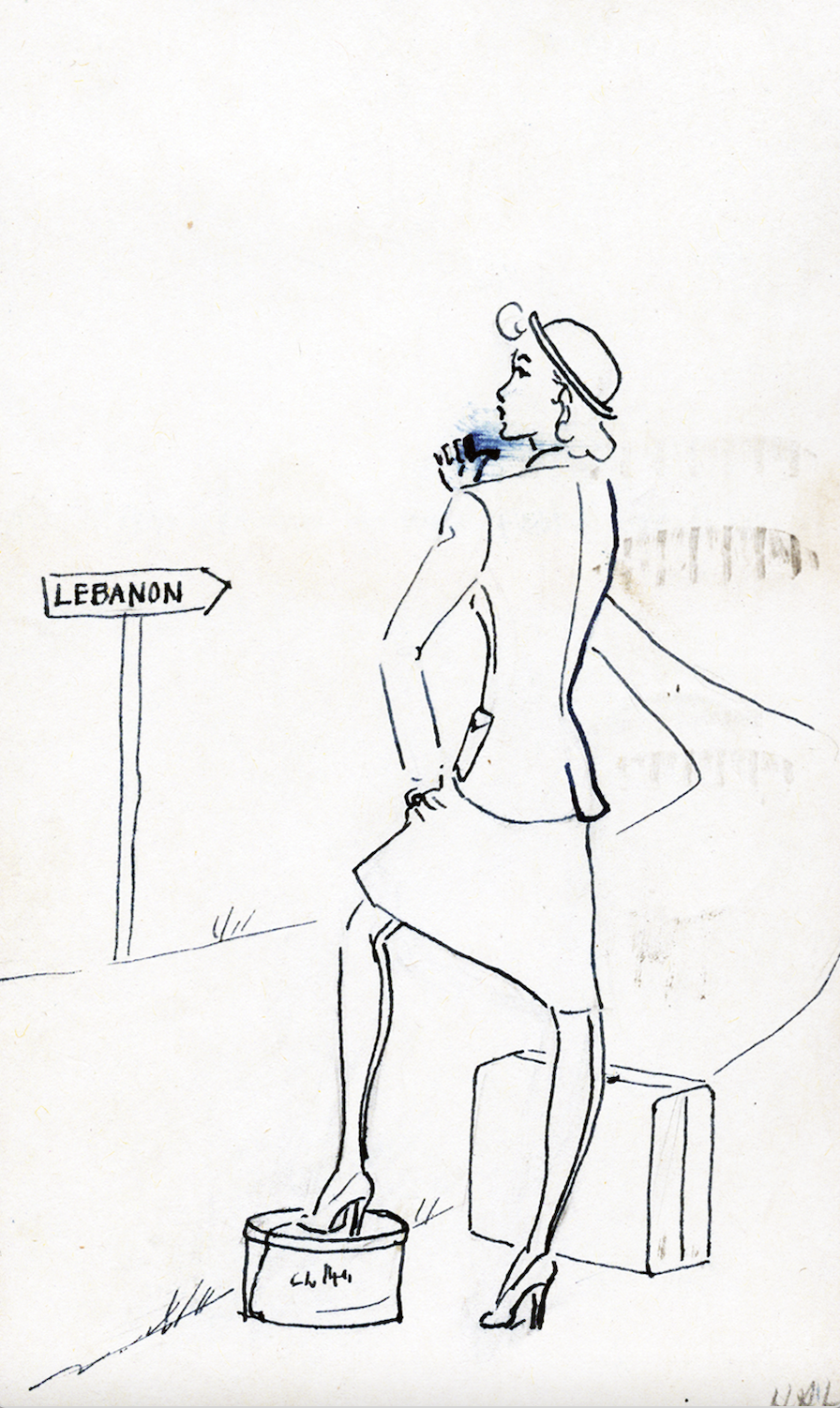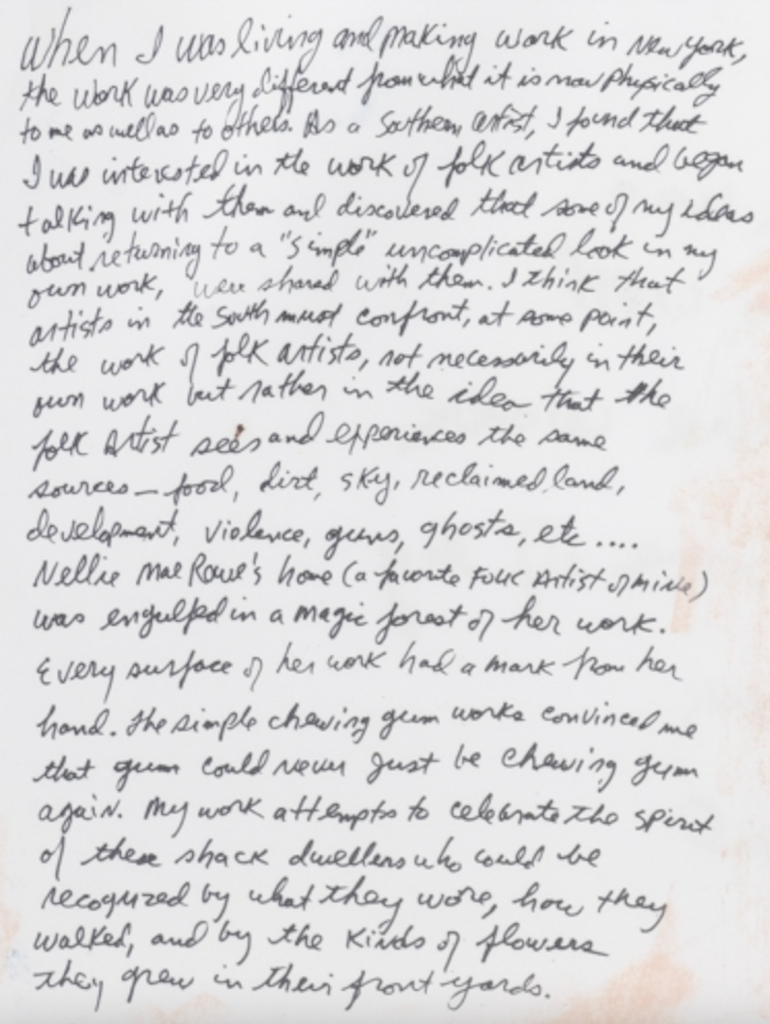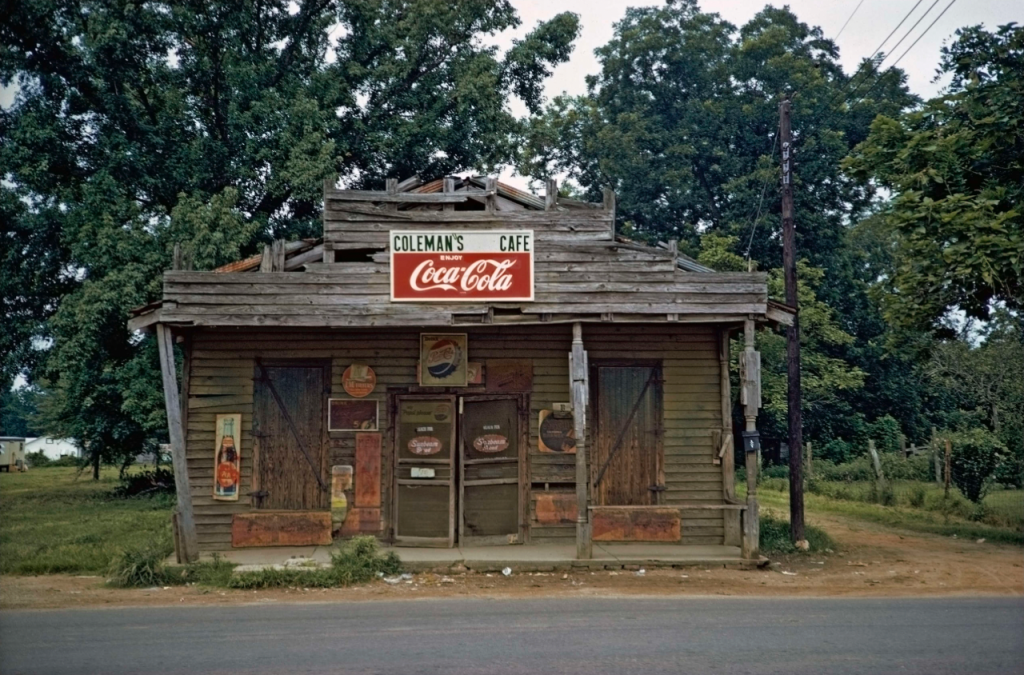Pictured above on the left is a portrait Helen made of her husband, Albert Lineberry Sr. believed to be made with ink and gouache on paper. On the right is a photograph taken of Helen as new mother in Asheville, NC.
By the 1950s, another vector of critical debate is signaled in portraiture: namely, Helen’s simultaneous work as mother, wife, and artist, which necessarily includes overseeing household operations and the work of child-rearing. Second wave feminist artists, performers, filmmakers, and scholars of the 1960s and 70s would challenge or possibly model ways out of gendered domestic labor. As a potential precursor cultivated in the 1940s, 50s, and 60s Helen’s studio practice sets part of the second wave feminist stage through a slightly anticipatory – though not necessarily “liberatory” – model: can art itself become a viable part of life informed by gendered domestic labor? The “pedestrian” quality of some of Helen’s work requires close revisitation.
Lucy R. Lippard asserts in her 1978 “Something from Nothing (Toward a Definition of Women’s ‘Hobby Art’)”:
“Now that the homebound woman has a little more leisure, thanks to so-called labour-saving devices, her pastimes are more likely to be cultural in character.” Lippard does not shy away from the class dynamics which underwrite her statement. Squaring Helen into this camp, Lippard states that middle- and upper-class women — needless to say white women — have a demographic track record in their support and need (Lippard’s word) of aesthetic experiences “in the broadest sense more than men – perhaps because the vital business of running the world, for which educated women have, to some extent, been prepared, has been denied them; and because they have the time and background to think – but not the means to act.” As Helen was married to prominent civic and business leader, Albert Lineberry Sr., Lippard’s hypothesis might bear some truth. I would argue Helen used art to fortify herself within her given circumstances. To say nothing of Lippard’s opinion on working-class women, I believe her assessment to be true of Helen’s work as a member of “the comfortable classes.” However, it’s imperative to note this comfort did not live in a vacuum and that the time and space to perform creative work requires an acknowledgment here of the oft-invisibilized labor of Black women employed for help in the domestic spheres of Helen’s life and home, particularly in the segregated Jim Crow South.
Nonetheless, the notion of work for privileged white women such as Helen retained the feminized shape of patriarchy. As evidence of this strata of labor, the roles of mother and wife seemed to deeply influence the subjects Helen engaged in her art practice. Many of the questions feminist artists would ask about the space between art and life such as Mierle Laderman Ukeles, are present to a degree in Helen’s work reflected not only in her portraits, but as well as scenes of domestic interior still lives. The literal structure of these interiors often incorporate architectural details. The images above, though, are portraits Helen made of each of her five children, made in both Asheville and later Greensboro. One is an incomplete painting and is the only known work thought to be of her oldest son, Albert Lineberry Jr; however, this is not to suggest that another more complete work was never made. The ongoing dialogue with family about documentation, much less cataloguing, Helen’s work remains in flux. Another image featuring a portrait of Helen’s second-youngest, Tommy, was taken and edited from a recent eBay auction from which it was later removed.

Pictured above is a photo from Asheville Citizen-Times, depicting Helen Lineberry with a commissioned portrait she painted of the late W.E. Sweatt, former superintendent of the now-shuttered Alexander School in Union Mills, NC. Sweat was killed in a school shooting in 1951. You can read about the school’s history and some information about Sweatt here. A curious legal case around liability and compensation for Sweatt’s death can be found in Sweatt vs. Board of Education. Whereabouts of Helen’s portrait of Sweatt are currently unknown, as this is the only documentation available. Portraiture in Helen’s oeuvre indicated an arguably unprecedented shift in intimacy with her subjects.
Helen appeared to gain an interest in portraiture as way to stake out her position within her own community. Above is an image from Asheville Citizen-Times March 25, 1954 (left) for a portrait exhibit at Little Art Gallery, 10 Wall St. in downtown Asheville, NC. The gallery is no longer there and is now Purls’ Yarn Emporium. Featured on the right of the image is Helen Lineberry posing with her portrait of Mrs. Schmidt. Next to the image is the portrait itself. According to the family, Mrs. Schmidt immigrated from Russia and lived close by, sitting regularly for this portrait – the exact intentions or motives by Helen, however, remain subject to speculation. Regarding Helen’s exhibition of her work, local and family lore has it that when living in Greensboro, Helen brought work to the Weatherspoon Art Gallery – now Weatherspoon Museum – for a show. Upon arriving with the work, it is said the exhibition’s jury didn’t believe the work could have been made by Helen due to its perceived high quality. Helen took the piece back and refused to show it saying that that was all the recognition she needed.



































































